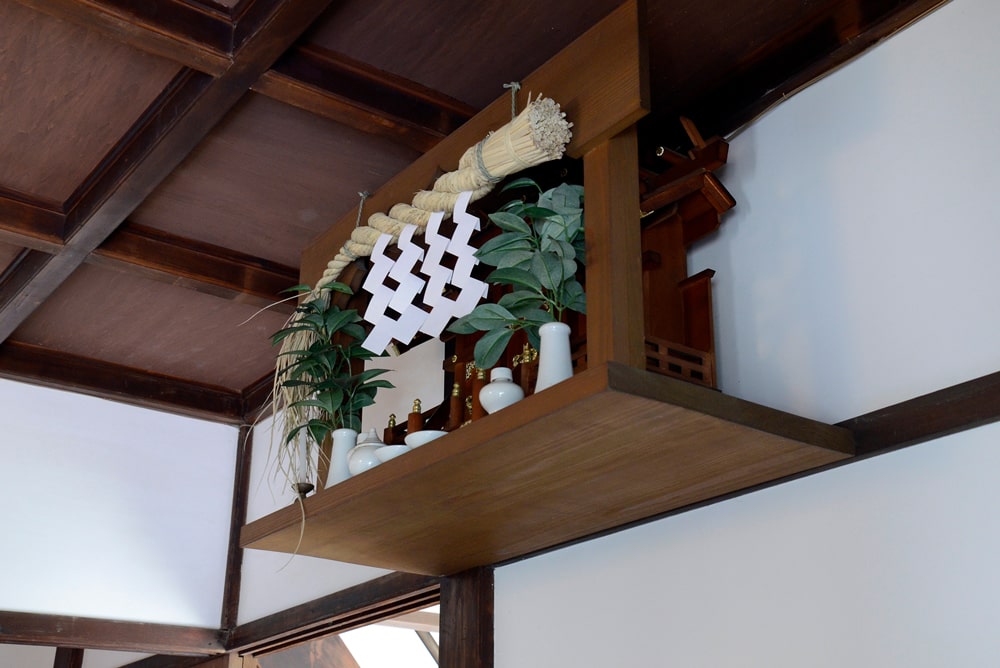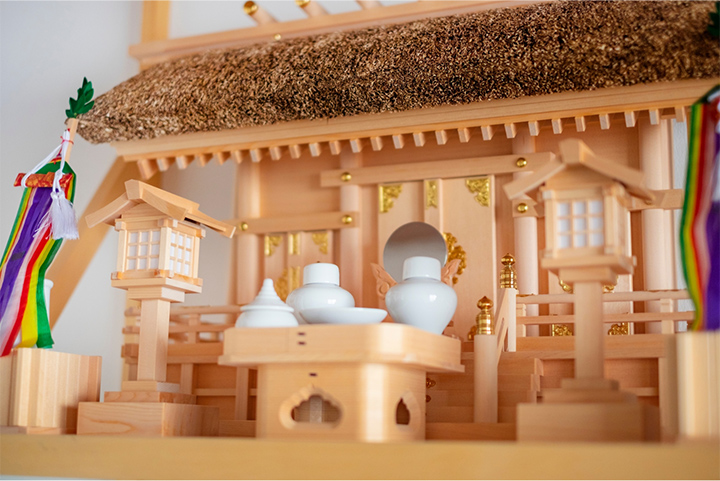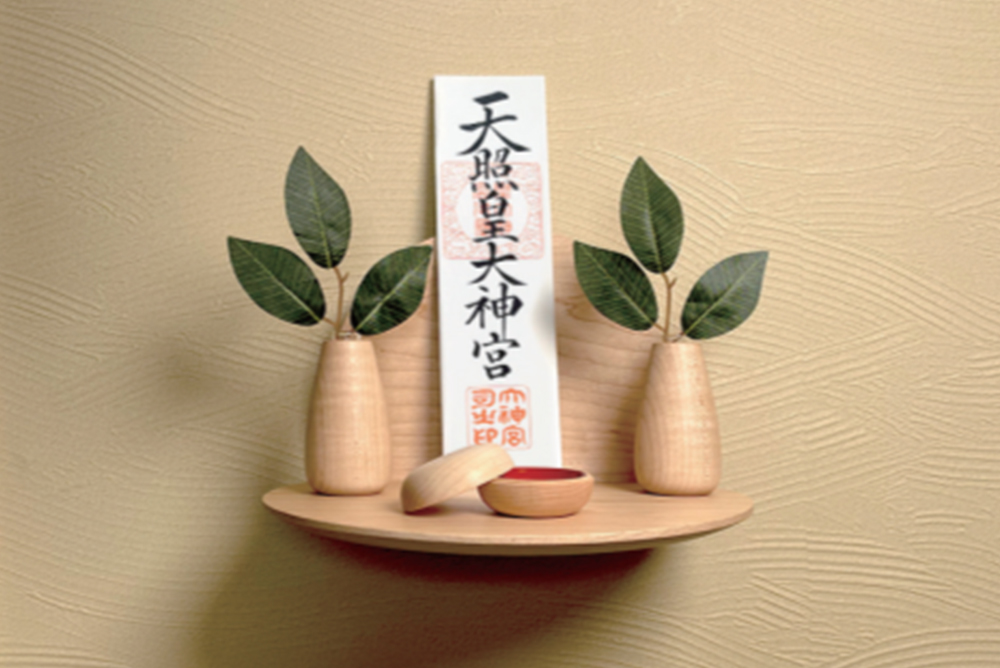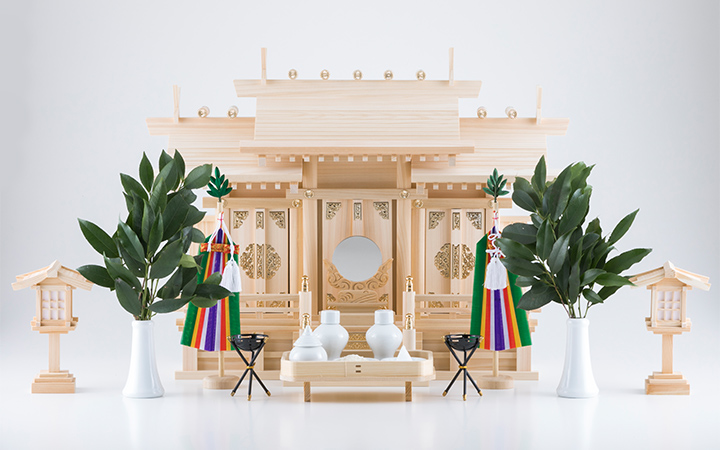Household Matsuri
The kami are not only venerated at jinja, but also in ordinary households across Japan. Some kami are venerated in specific places, such as Kojin in the kitchen, to guard against fires, and others at particular times, such as Toshi-gami at New Year. It is normal for a shelf (“tana” or “dana” in Japanese) to be set aside as a sacred space within the home for these kami, and the shelf for the kami who are venerated year-round for the home in general is simply called the “kamidana”.

The origins of the kamidana are found in the eighth-century Kojiki, when Izanagi-no-Mikoto gives his daughter, Amaterasu-Omikami, a string of jewels that she venerates on a shelf. Today, people venerate the kami through ofuda, sacred plaques obtained from jinja. The most important of these is the Jingu Taima, the ofuda from Ise Jingu, through which people venerate Amaterasu-Omikami. Every kamidana should have one of these. People also venerate the ofuda of their local jinja, their ujigami, and often the ofuda of other jinja to which they feel a particular tie.
The kamidana is placed somewhere clean and bright where the household can easily gather to venerate the kami together. If possible, it is set slightly above eye level, and so that the kami face either east (towards the rising sun) or south (towards the sun during the day), but it is more important that it be easily accessible.
It is possible to simply stand the ofuda on the shelf to venerate them, but most people enshrine them within a “miyagata”, a small version of the sanctuary buildings at a jinja. This container is sometimes also called a “kamidana”, but that word strictly refers to the shelf. There are many different styles of miyagata and kamidana, and recently more have been produced that suit modern and western-style rooms, and so people choose whatever style most appeals to them. The important thing is that the kami are sincerely revered, not the precise form of the kamidana.


The ofuda are enshrined on the kamidana so that the Jingu Taima is in the position of greatest honour, the ofuda from the household’s ujigami in the next place, and those of other jinja after that. Some miyagata have three spaces, and in that case the Jingu Taima goes in the centre, the ofuda of the ujigami goes to the right as the household look at the kamidana, and the ofuda of other jinja go to the left. Other miyagata have only one space, and all the ofuda are placed there, with the Jingu Taima at the front, the ujigami ofuda behind it, and the other ofuda behind that.
Ideally, the household gathers every day, and offers rice, water, and salt to the kami, along with prayers of thanks. The offerings are placed in order of honour, as with the ofuda. Rice is placed in the centre, and closest to the ofuda, while salt is to the right from the household’s perspective, and water to the left, normally behind the rice. Sake may also be offered, in which case it comes immediately after the rice in honour. Seasonal fruits and vegetables, or gifts from distant places, may also be presented to the kami before the family enjoy them. In this way everyone feels that they are a valued part of the household, and develops their sense of gratitude to the kami.
Non-Japanese are welcome to venerate the kami in the same way if they so wish.

Glossary
Record of Ancient Matters which was completed in 712.
The male kami that fathers the Japanese islands and other kami.
The ancestral kami of the Tenno and the Imperial family